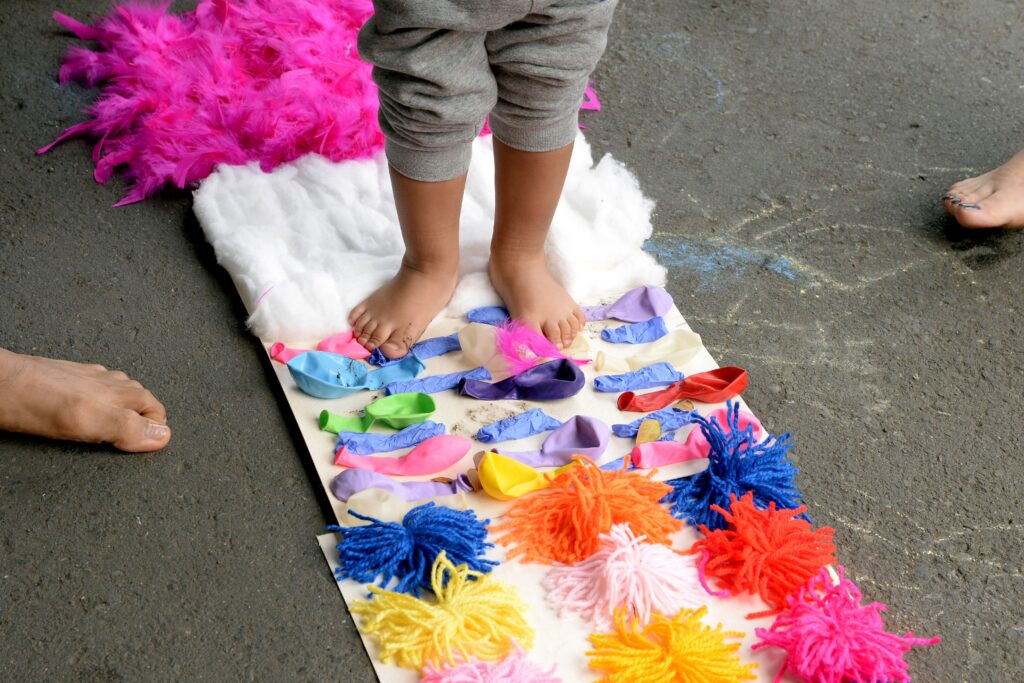“There’s no such thing as a child who can’t learn, only ways we haven’t tried yet.” That powerful truth sits at the heart of early childhood education. And more often than not, the most effective approach isn’t just reading or listening, it’s seeing, touching, tasting, dancing, and building. It’s multisensory learning.
In fact, research shows that children retain up to 75% of information when they engage multiple senses, compared to just 10% when they rely on hearing alone. That’s not a small difference. That’s a game-changer.
What Is Multisensory Learning?
At its core, multisensory learning means engaging more than one sense at a time to teach concepts. Think of a child counting apples in a basket (touch, sight, movement), or stomping their feet while learning syllables (sound, movement, rhythm). It’s education that’s layered, playful, and rooted in real experience.
Multisensory doesn’t just mean more fun, it means more connection in the brain. When children explore with their hands, eyes, ears, and bodies, they’re creating strong neural pathways that support memory, attention, and problem-solving.
Why It Works: The Brain-Body Connection
We now understand that learning doesn’t only happen in the head, it happens in the whole body. When a child uses their hands to sort colors, dances to letter sounds, or smells herbs in a garden, they’re anchoring abstract ideas in real-world sensation.
Here’s how multisensory learning supports cognitive development:
- Reinforces memory by connecting ideas to multiple sensory inputs
- Builds fine and gross motor skills through hands-on interaction
- Engages both hemispheres of the brain through rhythm, movement, and visual patterning
- Supports different learning styles, especially for neurodiverse children
This approach isn’t new, but it’s gaining renewed traction as educators and parents see how effectively it helps children grow.
What Multisensory Learning Looks Like in Action
Let’s get specific. These are some of the ways we incorporate multisensory learning into our daily rhythm at I’m Just A Kid:
1. Tactile Play Builds Brain Power
Whether it’s finger painting, sorting pom-poms by size, or scooping beans into measuring cups, tactile play builds early math, motor, and language skills. When a child touches and manipulates real materials, they build concepts in ways a worksheet simply can’t match.
Want to try it at home? Fill a bin with rice, pasta, or water beads. Add scoops, containers, and hidden alphabet letters. Watch the learning unfold!
2. Movement Makes Meaning
Young children learn through movement. Dancing the alphabet, hopping through number paths, or building obstacle courses helps connect physical energy to academic content.
When we move our bodies, we engage proprioception, our sense of body position in space, which is linked to attention and focus. That’s why multisensory learning is especially powerful for children who need to wiggle, stretch, and bounce!
3. Sound Sparks Language and Listening
Songs, rhythm games, and musical cues are essential tools for language development. When children sing vowel sounds, clap syllables, or match rhythms to animal sounds, they’re learning to segment and process information.
At I’m Just A Kid, we use rhythm sticks, call-and-response games, and themed sound jars to build listening skills with joy.
4. Taste, Smell, and Exploration Build Curiosity
Science shows that smell is one of the most memory-rich senses. That’s why multisensory learning often involves cooking, gardening, and scent-based discovery. Whether it’s smelling lavender in a sensory bottle or tasting different fruits on rainbow day, kids learn more when they engage all five senses.
These experiences deepen understanding and foster emotional connection. They also help children grow in independence and decision-making as they explore the world around them.
The Real Impact: How Multisensory Learning Helps Children Grow
At the end of the day, what matters most is how children grow, socially, emotionally, and academically. And multisensory learning supports all three.
When children build towers with their friends, dance together in circle time, or explore a sound box as a group, they’re not just learning facts. They’re learning how to share, take turns, express ideas, and solve problems. They’re learning to think, move, and feel all at once.
That’s not a coincidence. It’s the result of an intentional learning model that meets kids where they are, and helps them reach where they’re going.
Try It at Home
Looking to bring some multisensory learning into your own routine? Here are three simple activities to get started:
- Sensory Letters: Use shaving cream or salt trays to “write” letters with your finger.
- Kitchen Math: Bake together, measuring ingredients while counting out loud.
- Texture Walk: Take off shoes and explore different surfaces, grass, tile, sand. Describe how each feels.
You don’t need fancy tools. You just need curiosity, presence, and a willingness to play.
Let’s Keep Growing Together
At I’m Just A Kid, multisensory learning is at the heart of everything we do. Because when kids learn with their whole selves, they don’t just understand, they remember, enjoy, and thrive.
Have questions about how to bring more multisensory moments into your day? We’d love to share ideas! Reach out to our team or stop by for a visit.
Let’s make learning joyful, one sense at a time.
